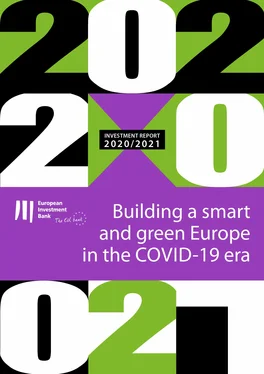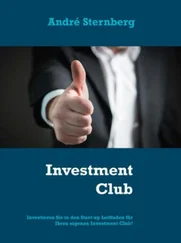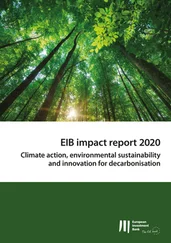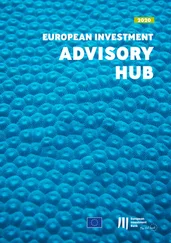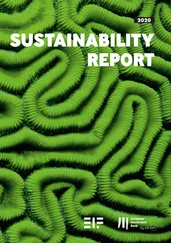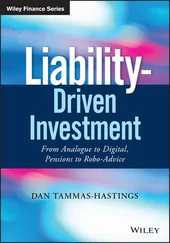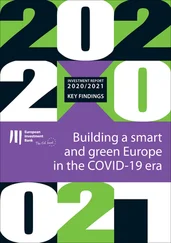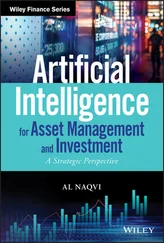In addition to supporting the income of those unable to work and minimising negative effects on demand, the policy package could also be instrumental in shaping the future of Europe.The crisis provided an opportunity to address the major challenges facing the European economy, such as climate change and digitalisation. The crisis response is also historic as it led to the first joint European issuance of debt on a large scale. The joint debt issuance could turn out to be a cornerstone of the capital markets union. The crisis has affected European economies differently, and recovery needs to focus on stronger financial integration if cohesion is to be maintained within the European Union.
Abraham, K. and Houseman, S. (1994). “Does Employment Protection Inhibit Labour Market Flexibility? Lessons from Germany, France, and Belgium.” In: Blank, R. (ed) (1994). Social protection versus economic flexibility: Is there a trade-off? University of Chicago Press, pp. 59-94.
Anderson, J., Bergamini, E., Brekelmans, S., Cameron, A., Darvas, Z., Domínguez, Jíménez, M., Lenaerts K. and Midões, C. (2020). “The fiscal response to the economic fallout from the coronavirus.” Bruegel, 5 November.
Arpaia, A., Curci, N., Meyermans, E., Peschner, J. and Pierini, F. (2010). “Short time working arrangements as response to cyclical fluctuations.” European Economy - Occasional Papers 64: European Commission.
Baldwin, R. (2019). The Globotics Upheaval . Oxford: Oxford University Press.
BIS (2020). “Markets rise despite subdued recovery.” BIS Quarterly Review .
Blatter, M., Muehlemann, S. and Schenker, S. (2012). “The Costs of Hiring Skilled Workers.” European Economic Review , Vol. 56(1), pp. 20-35.
Blavatnik School of Government (2020). Coronavirus Government response tracker. University of Oxford, https://www.bsg.ox.ac.uk/research/research-projects/coronavirus-government-response-tracker, 30 November.
Bonadio, B., Huo, Z., Levchenko, A. and Pandalai-Nayar, N. (2020). “Global supply chains in the pandemic.” CEPR Discussion Paper 14766.
Chudik, A., Mohaddes, K., Pesaran, M.H., Raissi, M. and Rebucci, A. (2020). “A Counterfactual Economic Analysis of Covid-19 Using a Threshold Augmented Multi-Country Model.” NBER Working Paper 27855.
De Santis, R. (2015). “A measure of redenomination risk.” ECB Working Paper 1785.
Del Negro, M., Giannone, D., Giannoni, M.P. and Tambalotti, A. (2018). “Global Trends in Interest Rates.” Federal Reserve Bank of New York Staff Reports 866.
Drehmann, M., Farag, M., Tarashev, N. and Tsatsaronis, K. (2020). “Buffering Covid-19 losses – the role of prudential policy.” BIS Bulleting, No. 9, https://www.bis.org/publ/bisbull09.pdf
EBA (2020). “First evidence on the use of moratoria and public guarantees in the EU banking sector.” EBA Thematic Note EBA/Rep/2020/31, November.
EBA, ESMA and EIOPA (2020). Joint committee report on risks and vulnerabilities in the EU financial system, September.
ECB (2020a). “ECB recalibrates targeted lending operations to further support real economy.”
ECB (2020b). “ECB extends recommendation not to pay dividends until January 2021 and clarifies timeline to restore buffers.”
ECB (2020c). Euro area bank lending survey, Q2. https://www.ecb.europa.eu/stats/ecb_surveys/bank_lending_survey/pdf/ecb.blssurvey2020q2~d8de5b89f0.en.pdf
ECB (2020d). Financial Stability Review, May 2020.
ECB (2013). “Quantifying intra-euro area spillover effects using the global VAR model.” ECB Monthly Bulletin, January.
ECIJA (2020). “COVID-19 Spain: FAQs for business.” Available at: https://ecija.com/en/sala-de-prensa/covid-19-spain-faqs-for-business/
Ehrentraud and Zamil (2020). “Prudential response to debt under Covid-19: the supervisory challenges.” BIS FSI Brief No 10. https://www.bis.org/fsi/fsibriefs10.pdf, Bank for International Settlements.
EIB (2018). “Assessing the Macroeconomic Impact of the EIB Group. Luxembourg: Economics - Impact Studies.”
EIB (2020). “Will European banks be able to provide credit and support the recovery?” Covid-19 weekly update June 19, unpublished manuscript.
ESRB (2020). https://www.esrb.europa.eu/national_policy/ccb/html/index.en.html.
European Commission (2019). “Labour Market and Wage Developments in Europe.” DG Employment European Commission, Brussels.
European Commission (2019). “Fourth progress report on the reduction of non-performing loans (NPLs) and further risk reduction in the Banking Union.” https://ec.europa.eu/info/publications/190612-non-performing-loans-progress-report_en
European Network of Public Employment Services (2020). “Short-time work schemes in the EU.” Study report written by H Mosley.
Finansinspektionen (2020). https://www.fi.se/en/published/news/2020/proposed-amendment-to-regulations-due-to-reduction-in-countercyclical-buffer-rate/
Gambacorta et al. (2004). “Does bank capital affect lending behavior?” https://www.esrb.europa.eu/national_policy/ccb/html/index.en.html
Google (2020). Community mobility reports. https://support.google.com/covid19-mobility/answer/9824897?hl=en&ref_topic=9822927, 30 November.
Hijzen, A. and Venn, D. (2011). “The role of short-time work schemes during the 2008-09 recession.” OECD Social, Employment and Migration Working Papers 115.
IIF (2020). Prudential Regulatory Measures in Response to COVID-19, update September 18, 2020. https://www.iif.com/Portals/0/Files/Databases/COVID-19_regulatory_measures.pdf?ver=2020-09-11-140736-500
IMF (2020a). FSR June Update.
IMF (2020b). “A crisis like no other, an uncertain recovery.” World Economic Outlook Update, June 2020.
IMF (2020c). Fiscal Monitor, October 2020.
Institute of Global Health Innovation (2020). COVID-19 behaviour tracker. https://www.imperial.ac.uk/global-health-innovation/our-research/covid-19-response/covid-19-behaviour-tracker/, Imperial College London, 30 November.
Jordà, O., Singh, S.R. and Taylor, A.M. (2020). “Longer-Run Economic Consequences of Pandemics.” FRBSF WP, 2020-09.
Kiley, M.T. (2019). “The Global Equilibrium Real Interest Rate: Concepts, Estimates, and Challenges.” Finance and Economics Discussion Series 2019-076.
Kohlscheen, E., Mojon, B. and Rees, D. (2020). “The macroeconomic spillover effects of the pandemic on the global economy.” BIS Bulletin 4.
Kruppe, T. and Scholz, T. (2014). “Labour hoarding in Germany: Employment effects of short-time work during the crises.” IAB-Discussion Paper 17/2014.
Lagarde, C. (2020). “Monetary policy in a pandemic emergency.” Keynote speech by the President of the European Central Bank, at the ECB Forum on Central Banking, Frankfurt am Main, 11 November 2020.
Lane, P. R. (2020). “The ECB’s monetary policy in the pandemic.” Speech at the 62nd NABE Annual Meeting “Global Reset? Economics, Business, and Policy in the Pandemic.”
Lydon, R., Mathä, T. Y. and Millard, S. (2019). “Short-time work in the Great Recession: firm-level evidence from 20 EU countries.” IZA Journal of Labour Policy , Vol. 8(2), pp. 1-29.
Manning, A. (2011). “Imperfect competition in the labour market.” Handbook of Labor Economics , Vol. 4b: Elsevier, pp. 973-1041.
Mühlemann, S. and Pfeifer, H. (2016). “The Structure of Hiring Costs in Germany: Evidence from Firm-Level Data.” Industrial Relations , Vol. 55(2), pp. 193-218.
Müller, T. and Schulten, T. (2020). ”Ensuring fair short-time work - a European overview.” ETUI Policy Brief European Economic, Employment and Social Policy 7/2020.
OECD (2019). “Employment Outlook 2019: The Future of work.” OECD Publishing, Paris.
Читать дальше
